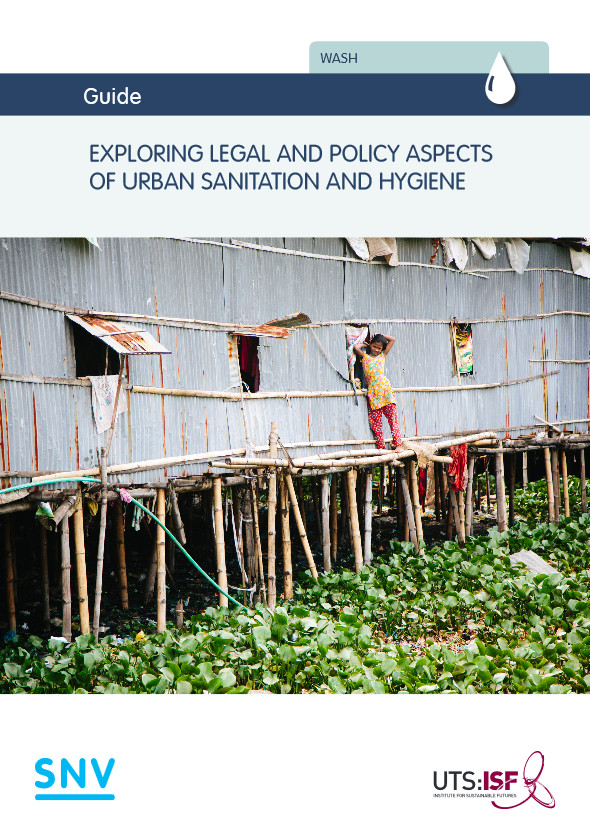Exploring legal and policy aspects of urban sanitation and hygiene
 |
guide Aug 2016 ; 28 pages
Ed. ISF - Sydney SNV - Den Haag
Téléchargeable sous format: PdF
Téléchargeable chez l'éditeur
Abstract:
Planning and financing for sanitation in cities and towns in developing countries is often ad hoc and piecemeal. Stronger capacity to plan financing for sanitation infrastructure (and services) for the long term will lead to better outcomes. Planning for adequate long-term services requires consideration of the complete sanitation service chain over the lifecycle of the associated service infrastructure. This paper focuses on access to the upfront finance and other lumpy finance needs for initial investment and for rehabilitation and/or replacement as physical systems approach their end of life. Contents:
Process of conducting a legal scan 7
Step 1 – Gather related legal documents 8
1.1 How to find the relevant documents? 8
Step 2 – Identify the relevant excerpts 13
2.1 How to find the relevant paragraphs? 13
Step 3 – Organise the information 14
3.1 Roles and responsibilities 14
3.2 Mapping information against the sanitation service chain 15
3.3 Equity of access to safe sanitation and hygiene 16
Step 4 – Reflect on what this means 17
4.1 Which objectives are pursued in urban sanitation and hygiene? 17
4.2 Which sanitation technology or type of settlement? 18
4.3 Where does the responsibility lie? 19
4.4 Legislation along the sanitation service chain 20
Final comments 23
References and links 24
Mots clefs: |
assainissement (CI) (DT) (OP) (ope) , bloc sanitaire public (CI) (DT) (OP) (ope) , hygiène (CI) (DT) (OP) (ope) , législation, lois (CI) (DT) (OP) (ope) |
Editeurs/Diffuseurs: |
|
ISF
-
Institute for Sustainable Futures - Sydney - Australie |
SNV
-
Organisatie voor ontiwkkelings samenwerking en bewustwording - Den Haag - Pays Bas |
En cas de lien brisé, nous le mentionner à communication@pseau.org